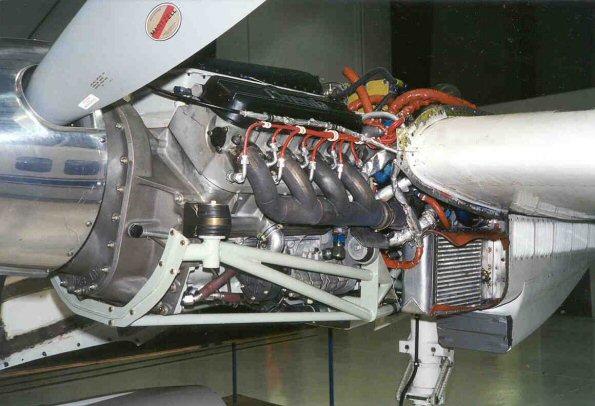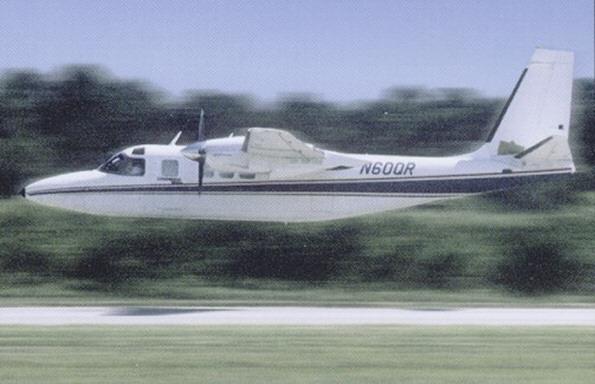- Aero Commander 685 with Orenda V8s-
An Impressive Aircraft In Flight
NOTE: All our Products, Designs and Services are SUSTAINABLE, ORGANIC, GLUTEN-FREE, CONTAIN NO GMO's, and will not upset anyone's precious FEELINGS or delicate SENSIBILITIES.
Late into the Aero-Commander 685 / Orenda conversion STC program (mid-1996), EPI was retained to design an engine mount to meet the client's perception of the requirements. EPI responded quickly, designing and analyzing the prototype engine mount in less than a week, without ever seeing the aircraft. EPI worked long-distance on the phone with the fabricating technicians to get the first mount built in just over two weeks from the beginning of the design effort. The first mount required only a single tiny modification to fit the aircraft. It survived Part-23 pull tests, and the prototype aircraft has used two mounts made to that design for the entire test-program to date.
EPI's extensive usage of CAD technology allowed quick response to the customer's rapidly-changing set of requirements.
EPI provided consulting services on several other aspects of this aircraft conversion, including cooling and lubrication system issues, design and installation of test flight instrumentation, and a system for test flight data capture, reduction and interpretation.

Port-Side Engine Installation

Runup

Flyby
I had the opportunity to takeoff, cruise around, and land the converted aircraft during the test program. The performance was spectacular, especially by comparison to the anemic performance with the certificated GTSIO-520 engines.
Takeoff was quite easy within 1200 feet from brake release without doing anything heroic or spectacular. Engine-out performance was quite comfortable, both at and below the published Vmc for the certificated AC-685. The single-engine climb rate was high enough to be in the range normally experienced only by turbine pilots.
HOWEVER, because of the torsional vibrations present in the poorly-designed propeller reduction system on the Orenda powerplant, the engine could not be idled down below 1800 rpm. That left a tremendous amount of residual thrust when trying to land the aircraft. So in order to get it stopped in any reasonable distance, the pilot had to heap abuse onto the braking system.
And then there was the issue of the Orenda powerplants being about 330 pounds (each) heavier than the GTSIO-520's they replaced (apples-to-apples), which caused a host of other problems, including the creation of a full-fuel, ZERO-PERSON aircraft.
The STC was never achieved for this conversion. The details of the various problems are presented HERE.

